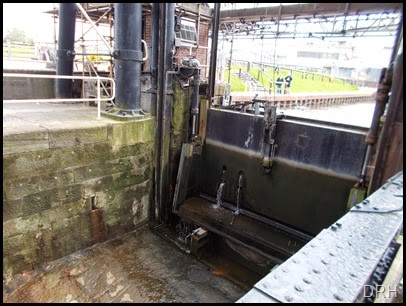When we first visited Northwich we were a bit disappointed as lots of shops looked empty and closed up, especially in Weaver Square, however when we returned on Tuesday things looked much brighter. Lots of the empty shops had move to premises close by and there are effectively two indoor markets. What we didn’t find was anywhere we fancied for an evening meal and there seemed a lack of pubs. There is a Weatherspoons but that is well up in the town, there is very little down down near the river. What did strike us was the number of Estate Agents, probably more than charity shops.
The town does have some old buildings but most of these were lost due to bad subsidence when some of the old Salt mines collapsed mainly due to poor engineering and water erosion. In Victorian times they were building timber framed so that they could be jacked up as the ground subsided.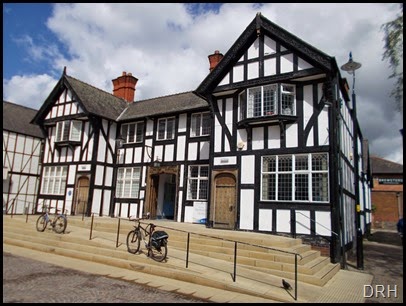
Northwich has a very good museum housed in the old workhouse and known as Weavers Hall. this houses information about the salt mining, the town in general including the subsidence and floods, there is also a section on the river which includes it boat building passed with some interesting displays and videos.
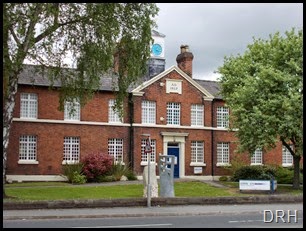
A short way from here is the old Edwardian Pumping Station. This is a Grade II listed building owned by United Utilities and run by volunteers.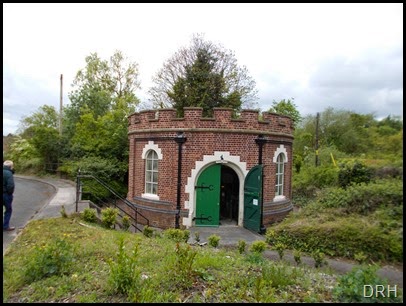 It is open on a Sunday afternoon and houses two Haywood Tyler triplex lift and force pumps each driven by a single cylinder Crossley gas fired engine. The pumps were running while we were there.
It is open on a Sunday afternoon and houses two Haywood Tyler triplex lift and force pumps each driven by a single cylinder Crossley gas fired engine. The pumps were running while we were there.
One of the other old buildings we visited while in town was the old Post Office sorting office which is now owned by Weatherspoons and is called The Penny Black.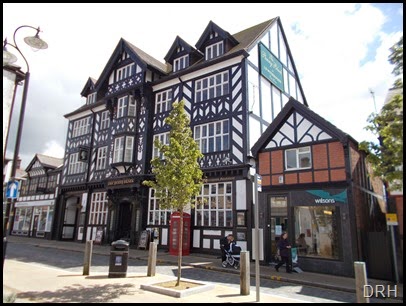
There is now a new marina in town and just behind it are the remains of the old side slip where boats would have been hauled out for repair . In its day this was all under cover in a large shed.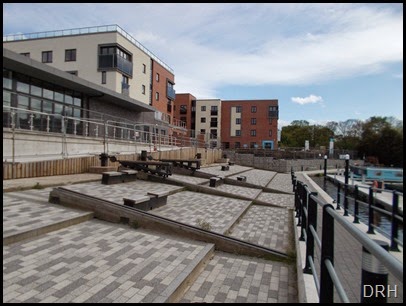
When the Weaver was still a commercial waterway the company erected marker posts before each lock so the men working the boats knew where they were. The only remaining compete one we could find was in Northwich, there were several with just the posts standing but the fingers smashed off.
Northwich has several claims to fame, one of them is the Town Bridge. 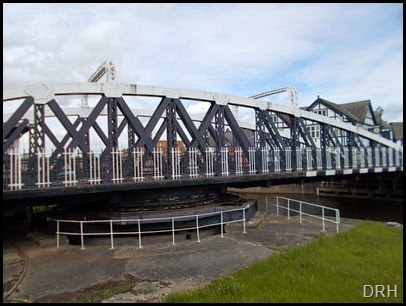 This was not only the first floating road swing bridge in the country, it actually floats in a tank of water, the rollers only guide it when it turns so reducing the friction, but it was also the countries first electrically operated swing bridge all back in 1899
This was not only the first floating road swing bridge in the country, it actually floats in a tank of water, the rollers only guide it when it turns so reducing the friction, but it was also the countries first electrically operated swing bridge all back in 1899
Northwich was also the place that polythene was discovered by ICI in 1933 where would we be today without that. This lead to several explosions at the factory in the early years.
Northwich sits on old salt mines, some of these were not as well engineered as they may have been and resulted in very bad subsidence in the town, not only that but there was also a great risk of more and even greater movement which meant that large parts of the town couldn’t be built on. To alleviate this in 2004 Northwich had the Worlds biggest programme for stabilising the mines by pumping them full of a mixture of Brine, cement and Pulverised fuel ash at a cost of £28 million. Over 780,500m3 of voids had to be filled. Of the materials pumped down the mines over 97% would have been disposed of as waste.

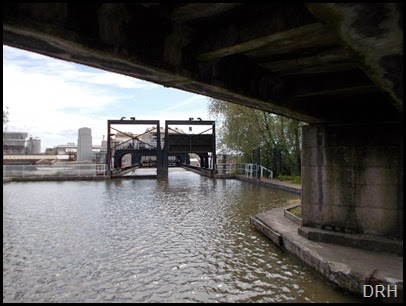
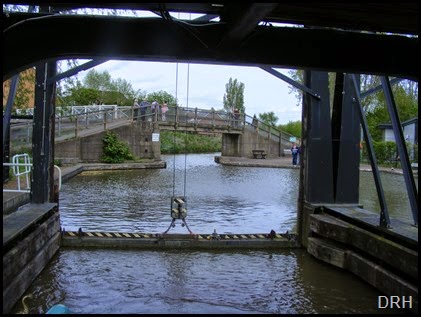 They now raise the guillotine gate at the the other end of the trough and the one on the inlet to the caisson simultaneously via an automatic linking arrangement that is operated by counter weights and gravity. The boat is now driven forward into the caisson and securely moored at the stern, I would imagine that a full length boat would require mooring at both ends or it would be to far forward.
They now raise the guillotine gate at the the other end of the trough and the one on the inlet to the caisson simultaneously via an automatic linking arrangement that is operated by counter weights and gravity. The boat is now driven forward into the caisson and securely moored at the stern, I would imagine that a full length boat would require mooring at both ends or it would be to far forward.
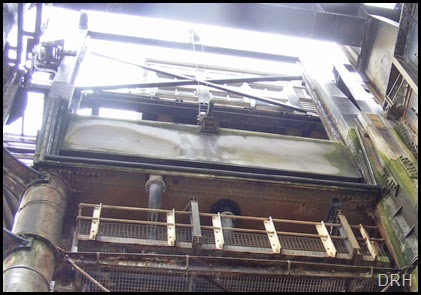 so as the caisson reaches the top of its travel it pulls tightly against the end of the trough. This seal is checked by filling the void between the gates with water before the guillotine gates are drawn.
so as the caisson reaches the top of its travel it pulls tightly against the end of the trough. This seal is checked by filling the void between the gates with water before the guillotine gates are drawn. 
